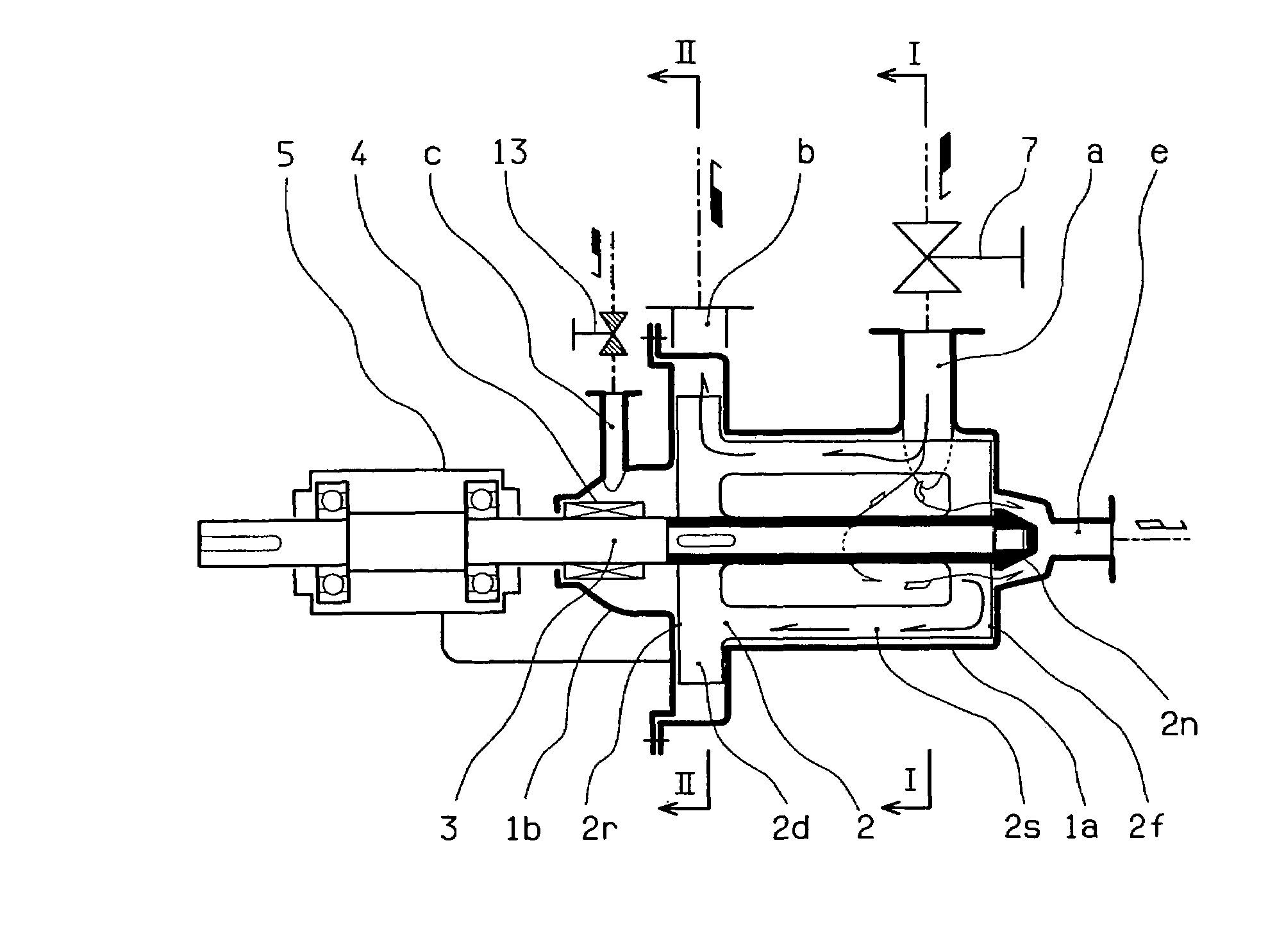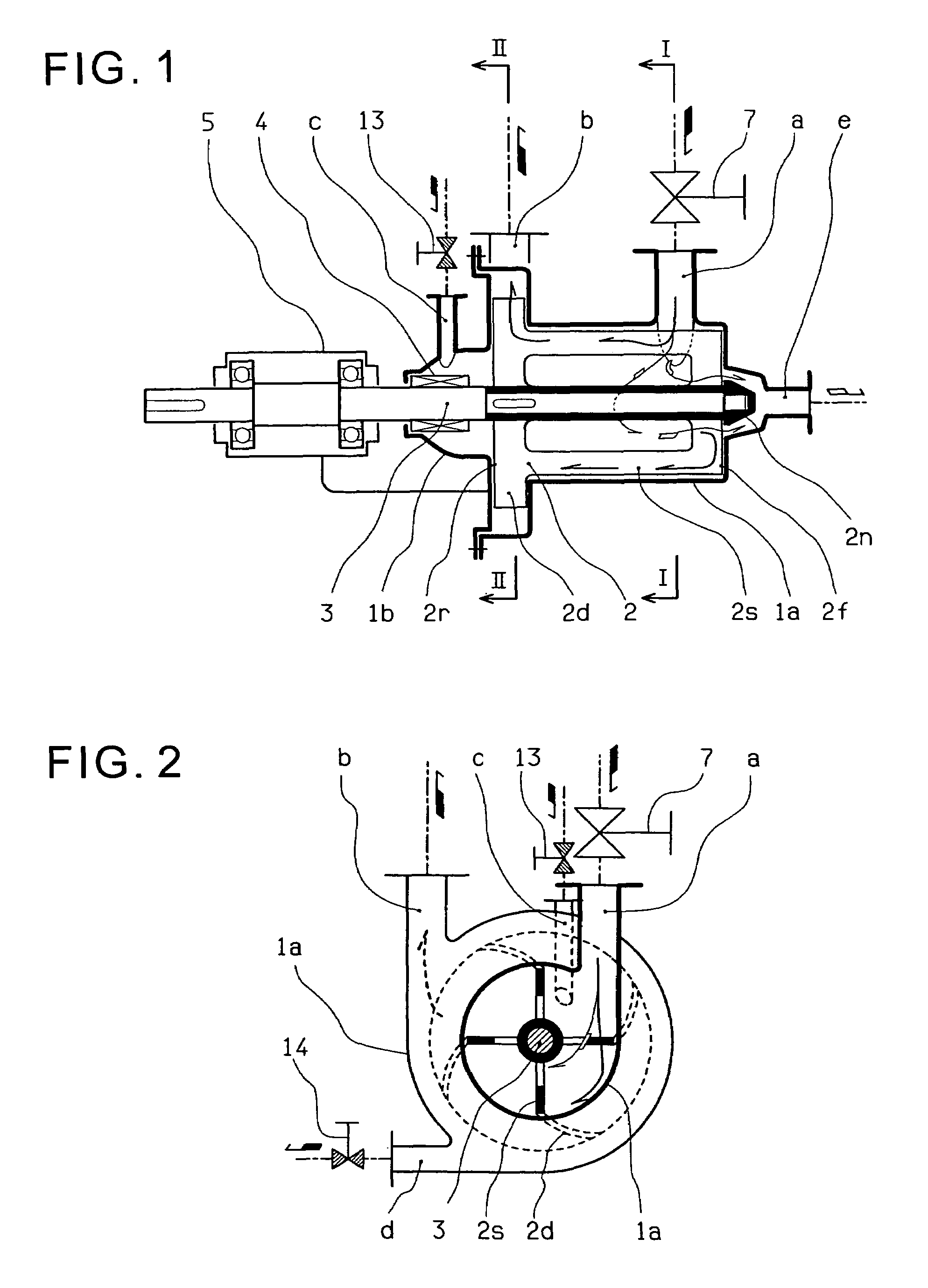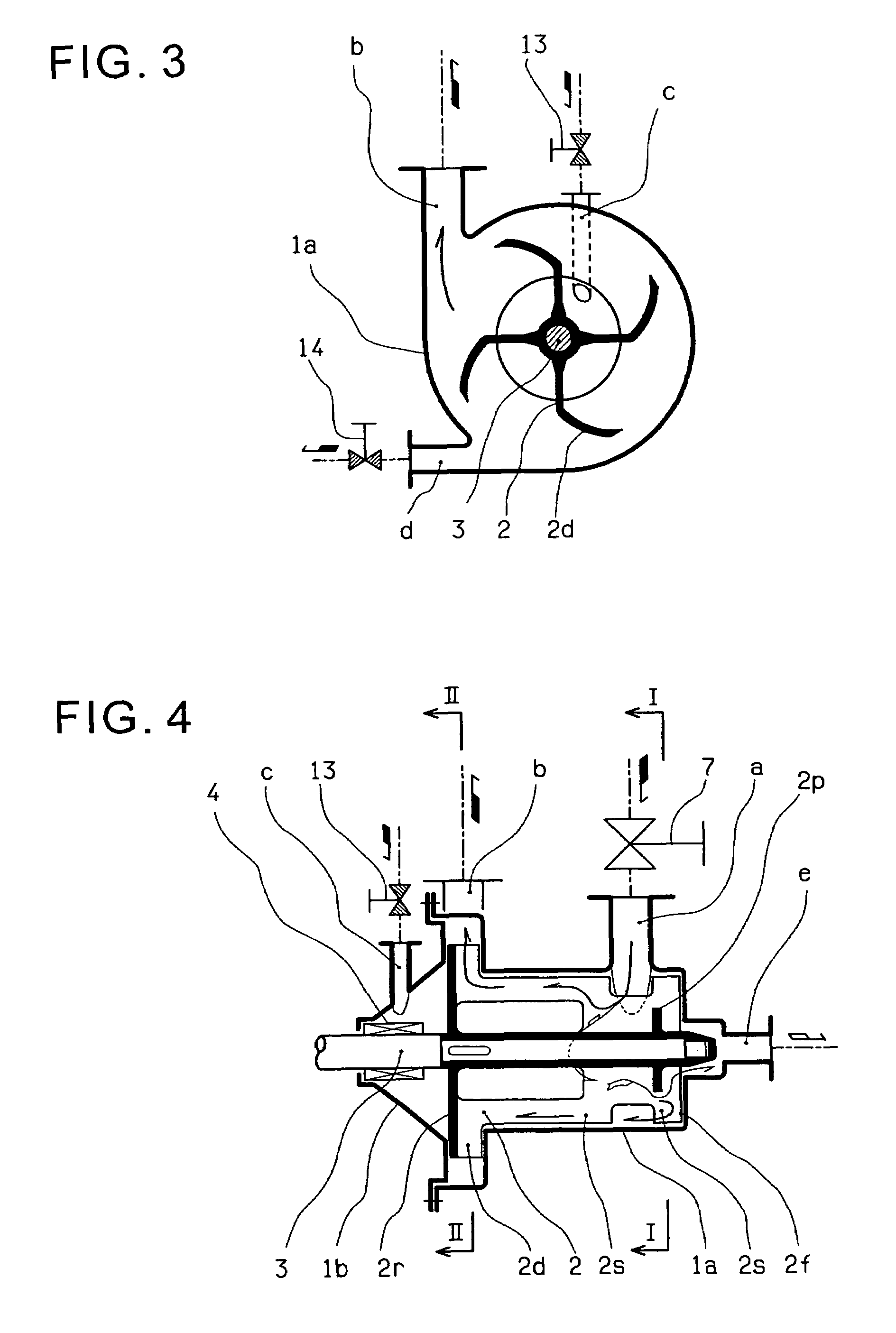Gas-liquid separator
a gas-liquid separator and separator technology, applied in the direction of liquid degasification, separation process, dispersed particle separation, etc., can solve the problems of increased replacement cost, clogging of the membrane, and the disadvantage of large space requirements, so as to facilitate assembly and the effect of reassembly
- Summary
- Abstract
- Description
- Claims
- Application Information
AI Technical Summary
Benefits of technology
Problems solved by technology
Method used
Image
Examples
first embodiment
[0049]FIG. 1 shows the present invention, FIG. 2 shows cross-section I-I in FIG. 1, and FIG. 3 shows cross-section II-II in FIG. 1.
[0050]A casing can be separated into 1a and 1b which form one cylindrical chamber when connected, and an impeller 2 with a suitable number of vanes is disposed in the casing 1a and 1b. The impeller 2, with an outer diameter that allows for a small clearance with respect to the inner wall of the casing 1a, is mounted to a rotating shaft 3. Although it may be mounted by screwing, it is mounted with an impeller nut 2n as illustrated in this embodiment. The rotating shaft 3 is supported by a shaft bearing 5, and penetrates the casing 1b with tight sealing at a shaft sealing 4, and a motor, not shown in the figure, drives the rotation.
[0051]The impeller 2 is provided with a separation impeller part 2s which performs gas-liquid separation in all areas around the rotating peripheral area, and the diameter near the one axial end (the left end in FIG. 1) 2r is ex...
second embodiment
[0071]The rest of the constitution and functions are the same as those of the
[0072]FIG. 9 illustrates the fourth embodiment and FIG. 10 illustrates section I-I in FIG. 9. In this embodiment, in regard to the impeller 2 in the apparatus of the third embodiment, a cylindrical member 2c, coaxial with the impeller 2, is attached to the impeller 2 at a position opposite the area between the suction inlet a and the discharge outlet b of the casing 1a.
[0073]Due to this structure, the pumped liquid flowing in from the suction inlet a is pushed against the inner wall of the rotating cylindrical member 2c and the rotation force is given from the inner wall simultaneously by flow resistance to separate the gas by centrifugal force, and it is then pushed out of the discharge outlet b by the discharge impeller part 2d. In other words, gas-liquid separation is performed moderately without excessive agitation, fracturing, or shear by friction with the edge of the impeller 2 or the inner periphery...
third embodiment
[0075]The rest of the constitution and functions are the same as those of the
[0076]The fifth embodiment in FIG. 11 shows the cylindrical member 2c of the fourth embodiment installed in multiple rows. Due to this, gas can be suctioned more effectively by increasing the boundary area (the surface area on which the liquid is exposed to the negative pressure of the vacuum means) of the liquid and the gas for gas-liquid separation. The cylindrical members are shown in two rows (2c and 2c′), however, the number of rows may be increased. A means of increasing the boundary area (processing or attaching material for porosity and roughness) may also be devised on these cylindrical members.
PUM
| Property | Measurement | Unit |
|---|---|---|
| centrifugal force | aaaaa | aaaaa |
| discharge force | aaaaa | aaaaa |
| mass | aaaaa | aaaaa |
Abstract
Description
Claims
Application Information
 Login to View More
Login to View More - R&D
- Intellectual Property
- Life Sciences
- Materials
- Tech Scout
- Unparalleled Data Quality
- Higher Quality Content
- 60% Fewer Hallucinations
Browse by: Latest US Patents, China's latest patents, Technical Efficacy Thesaurus, Application Domain, Technology Topic, Popular Technical Reports.
© 2025 PatSnap. All rights reserved.Legal|Privacy policy|Modern Slavery Act Transparency Statement|Sitemap|About US| Contact US: help@patsnap.com



